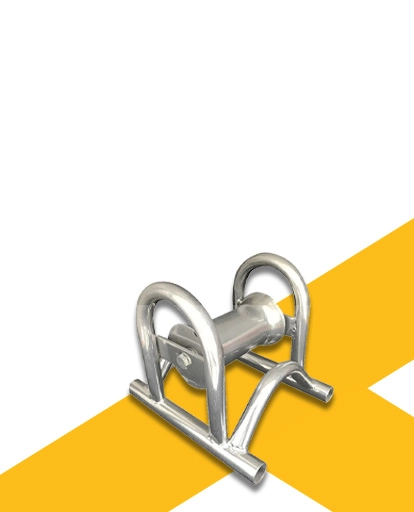
-
 Afrikaans
Afrikaans -
 Albanian
Albanian -
 Amharic
Amharic -
 Arabic
Arabic -
 Armenian
Armenian -
 Azerbaijani
Azerbaijani -
 Basque
Basque -
 Belarusian
Belarusian -
 Bengali
Bengali -
 Bosnian
Bosnian -
 Bulgarian
Bulgarian -
 Catalan
Catalan -
 Cebuano
Cebuano -
 Corsican
Corsican -
 Croatian
Croatian -
 Czech
Czech -
 Danish
Danish -
 Dutch
Dutch -
 English
English -
 Esperanto
Esperanto -
 Estonian
Estonian -
 Finnish
Finnish -
 French
French -
 Frisian
Frisian -
 Galician
Galician -
 Georgian
Georgian -
 German
German -
 Greek
Greek -
 Gujarati
Gujarati -
 Haitian Creole
Haitian Creole -
 hausa
hausa -
 hawaiian
hawaiian -
 Hebrew
Hebrew -
 Hindi
Hindi -
 Miao
Miao -
 Hungarian
Hungarian -
 Icelandic
Icelandic -
 igbo
igbo -
 Indonesian
Indonesian -
 irish
irish -
 Italian
Italian -
 Japanese
Japanese -
 Javanese
Javanese -
 Kannada
Kannada -
 kazakh
kazakh -
 Khmer
Khmer -
 Rwandese
Rwandese -
 Korean
Korean -
 Kurdish
Kurdish -
 Kyrgyz
Kyrgyz -
 Lao
Lao -
 Latin
Latin -
 Latvian
Latvian -
 Lithuanian
Lithuanian -
 Luxembourgish
Luxembourgish -
 Macedonian
Macedonian -
 Malgashi
Malgashi -
 Malay
Malay -
 Malayalam
Malayalam -
 Maltese
Maltese -
 Maori
Maori -
 Marathi
Marathi -
 Mongolian
Mongolian -
 Myanmar
Myanmar -
 Nepali
Nepali -
 Norwegian
Norwegian -
 Norwegian
Norwegian -
 Occitan
Occitan -
 Pashto
Pashto -
 Persian
Persian -
 Polish
Polish -
 Portuguese
Portuguese -
 Punjabi
Punjabi -
 Romanian
Romanian -
 Russian
Russian -
 Samoan
Samoan -
 Scottish Gaelic
Scottish Gaelic -
 Serbian
Serbian -
 Sesotho
Sesotho -
 Shona
Shona -
 Sindhi
Sindhi -
 Sinhala
Sinhala -
 Slovak
Slovak -
 Slovenian
Slovenian -
 Somali
Somali -
 Spanish
Spanish -
 Sundanese
Sundanese -
 Swahili
Swahili -
 Swedish
Swedish -
 Tagalog
Tagalog -
 Tajik
Tajik -
 Tamil
Tamil -
 Tatar
Tatar -
 Telugu
Telugu -
 Thai
Thai -
 Turkish
Turkish -
 Turkmen
Turkmen -
 Ukrainian
Ukrainian -
 Urdu
Urdu -
 Uighur
Uighur -
 Uzbek
Uzbek -
 Vietnamese
Vietnamese -
 Welsh
Welsh -
 Bantu
Bantu -
 Yiddish
Yiddish -
 Yoruba
Yoruba -
 Zulu
Zulu


Sep . 10, 2024 14:11 Back to list
joining cable ties together - measuring wheel
Joining Cable Ties Together An Ingenious Solution for Measuring Wheels
In the world of crafts, DIY projects, and even in professional settings, cable ties (also known as zip ties) have become indispensable tools. Their versatility, strength, and ease of use make them ideal for a host of applications. One inventive use that is gaining traction involves joining cable ties together to create custom-sized measuring wheels. This innovative approach not only maximizes the utility of cable ties but also provides a cost-effective method for measuring distances accurately.
The Concept of Measuring Wheels
Measuring wheels have long been used in various industries, including construction, landscaping, and surveying, to measure distances quickly and accurately. Traditionally, these devices consist of a wheel attached to a handle, which rolls along the ground as the user walks. The wheel's rotation is mechanically linked to a counter, which calculates the distance traveled. While measuring wheels can be purchased at a premium, the idea of constructing one using readily available materials, such as cable ties, opens up new avenues for cost savings and customization.
Materials Needed
To create a measuring wheel using cable ties, you'll need a few basic materials 1. Cable Ties Choose durable ties, preferably made of nylon, to ensure they can withstand outdoor conditions. 2. A Wheel This could be a plastic or rubber wheel from an old toy or a DIY piece made from other materials. 3. A Handle A sturdy stick or pipe can serve as the handle for the measuring wheel. 4. A Counter If you want to measure distances precisely, incorporating a simple mechanical counter can add functionality.
How to Join Cable Ties Together
1. Create a Base Start by forming a circular base using the cable ties. To do this, take multiple ties and loop them together, securing each one tightly to the previous tie. Make sure to interlock them in a way that creates a secure circle capable of supporting the wheel.
joining cable ties together - measuring wheel

2. Construct the Wheel Affix the wheel in the center of your circular tie base. If you're using a wheel from a toy, ensure that it has a center hole to fit snugly onto the handle.
3. Attach the Handle Insert the handle in the center of the wheel, securing it with additional cable ties. The handle should be long enough to allow the user to comfortably walk while using the wheel.
4. Add a Measuring Mechanism For accurate measurements, consider attaching a counting mechanism. This could be a simple mechanical counter that records rotations of the wheel, giving you a reliable way to measure distances.
5. Test Your Measuring Wheel Before putting your DIY measuring wheel to extensive use, take it for a test run. Check that the wheel spins freely, the handle is stable, and the distance counting mechanism works properly.
Benefits of Using Cable Ties
Creating a measuring wheel with cable ties provides several advantages. Firstly, it allows for customization in size and function based on individual needs. Secondly, it is an environmentally friendly alternative to purchasing new tools, particularly for those on a budget. Lastly, this project promotes creativity and resourcefulness, encouraging individuals to think outside the box when tackling practical tasks.
In conclusion, joining cable ties together to create a measuring wheel is not just a practical solution—it's an inventive approach that highlights the versatility of this often-overlooked tool. Whether for a DIY project at home or in professional settings, this method offers a unique blend of sustainability and functionality, proving that sometimes the simplest materials can yield impressive results.
Latest news
What Are Construction Tools and How Are They Used?
NewsJul.11,2025
Professional-Grade Duct Rodding Tools for Superior Cable Installation
NewsJul.11,2025
Enhancing Safety and Efficiency with Modern Hot Stick Solutions
NewsJul.11,2025
Empowering Cable Installation with Advanced Rodder Solutions
NewsJul.11,2025
Elevate Your Cable Installation Projects with Cable Pulling Tools
NewsJul.11,2025
Efficient Cable Handling Solutions: Cable Rollers for Sale
NewsJul.11,2025











